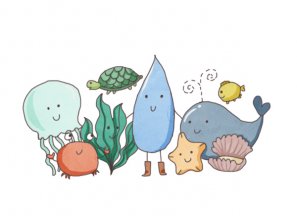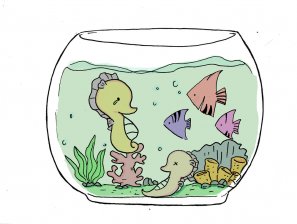Sea Cow
Dugongs have another, more intriguing name - sea cows. Nicknamed after their eating habits, they are mid-sized mammals, despite their colloquial designation in Vietnamese (“cá,” meaning fish). Another fun fact about dugongs: when Western sailors first saw them, they thought that these mammals were actually sea-dwelling people, and it was from these sightings that the myth of the mermaid was born.
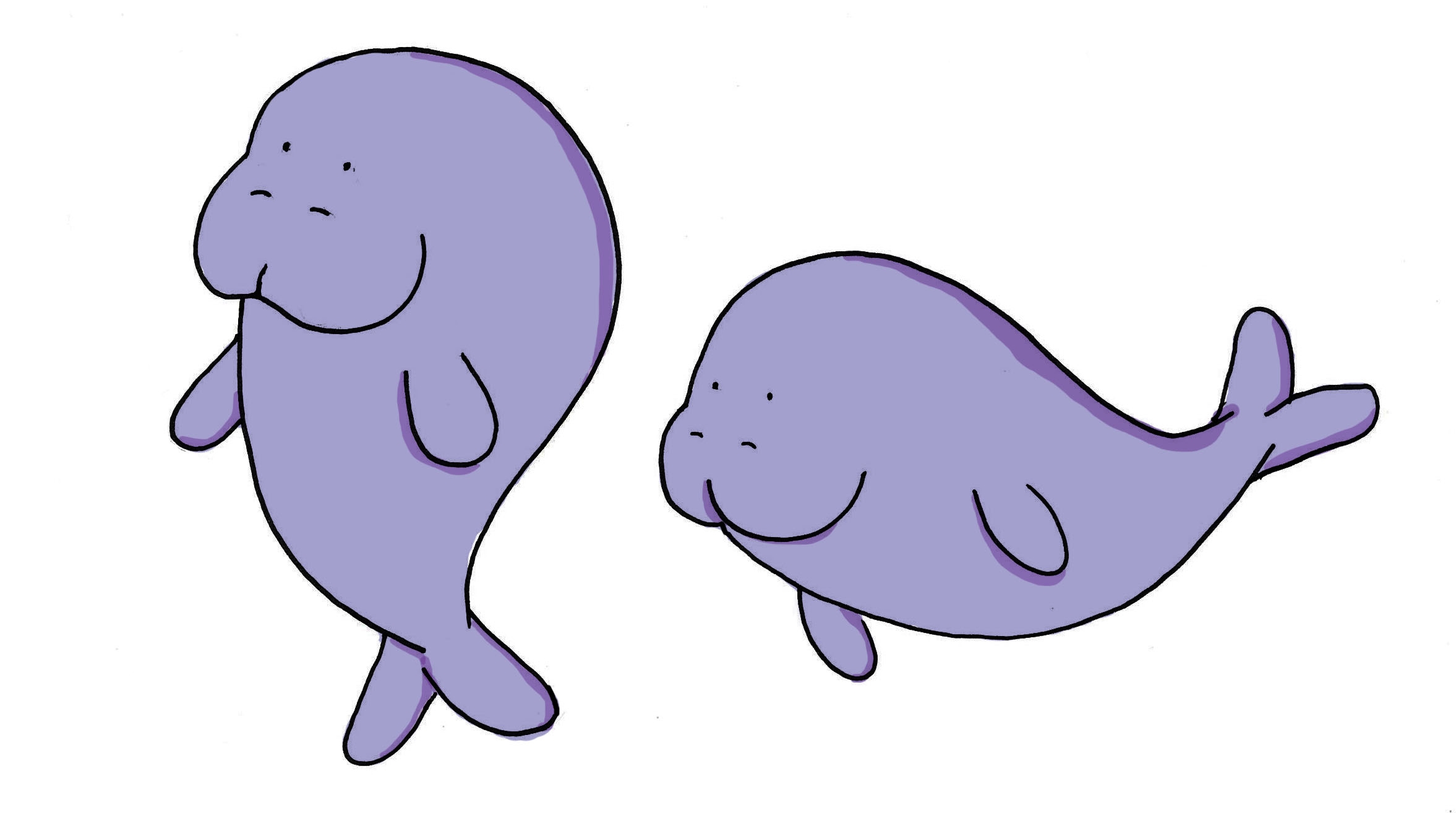
1. Understanding dugongs
What do they look like?
Sea cows are marine mammals that are very closely related to elephants. Unlike most land mammals like cows or rabbits, however, they do not have any fur. Their skin is smooth and grey, with only a few hairs throughout the body. Their heads are round with small eyes and a prominent snout, and their limbs function as flippers with no claws.
An adult manatee has a length of 2, 7 to 4 meters and a weight of 250 to 300kgs; babies already measure a meter in length and 20-30kgs.
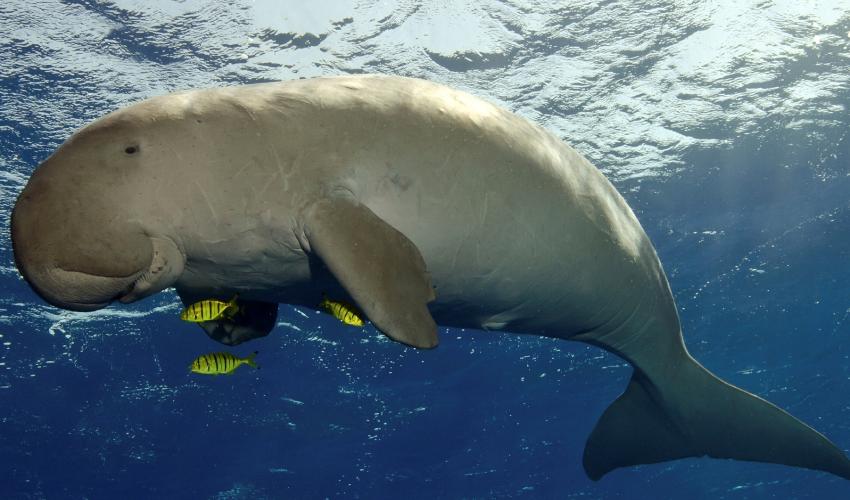
A sea cow swimming in the ocean. Photo: IUCN [1]
These animals swim by moving their powerful paddle-shaped tails vertically and steering with the two front limbs. They are slow swimmers - their speed, at 10 kHz, is on par with that of a bike, yet they can still travel great distances of up to 600 kilometers per day. Documentations of manatee populations near Vietnam’s territory (in the proximity of Kien Giang and Quang Ninh) have shown that manatees can move across different countries’ territorial waters.[2]
Dugongs communicate using a wide variety of sounds, including high-pitched squeals, quiet moans, and barks.
What do they eat?
As per their nickname, dugongs are herbivores; their favorite food is seagrass. Every day, they have to consume about 28 to 40kg of plants to gain sufficient energy. The dense skeleton helps them sink to grass beds, allowing them to forage for plants. When foraging, they will position their snouts near the grass bed, and use a pair of ridged jaws to uproot and tear ingested plants apart.
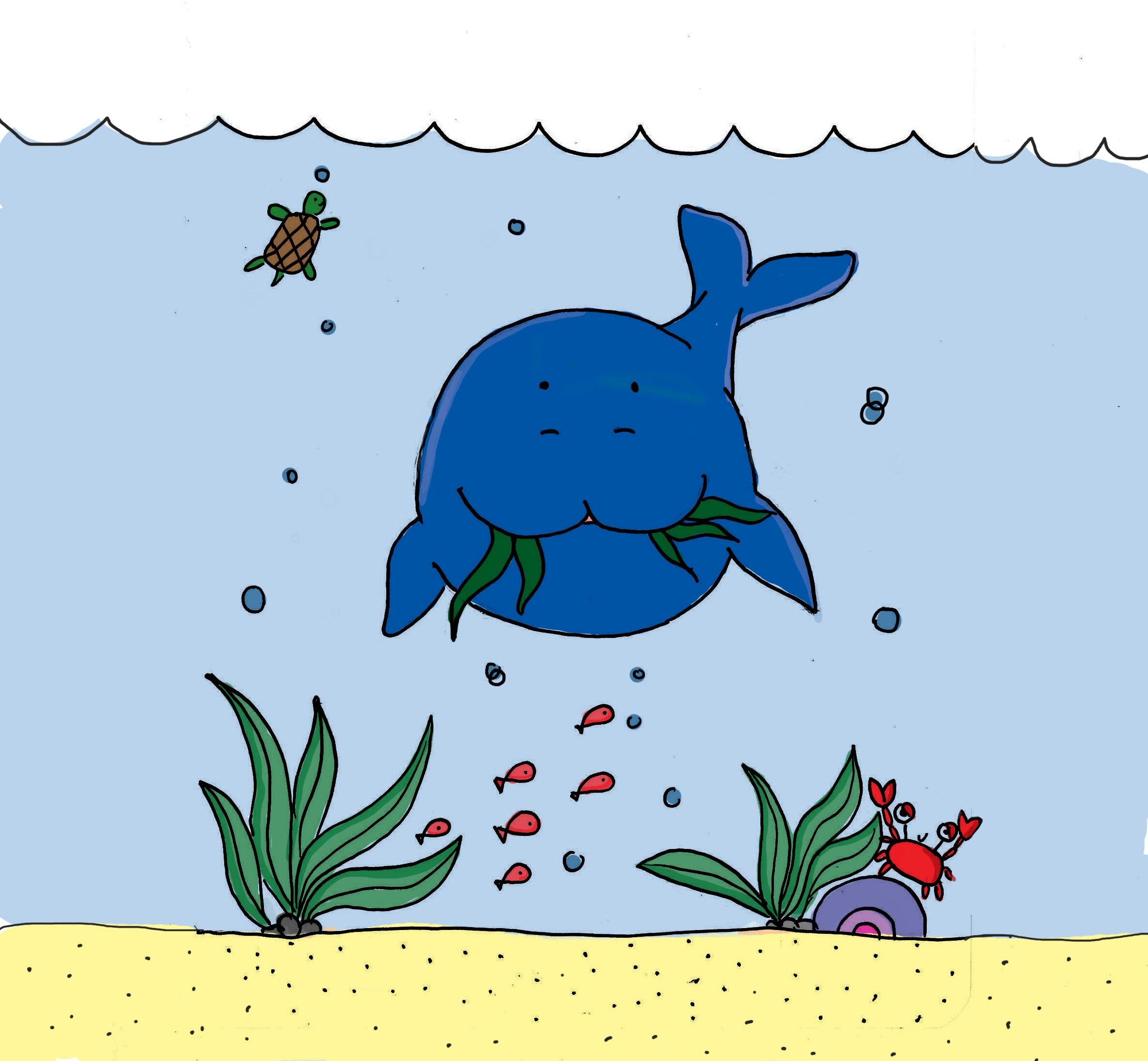
What is a life cycle for these animals like?
Dugongs gestate for 13 to 15 months. Newborns swim towards the ocean surface to breathe for the first time, and the calves are weaned in 1 or 2 years. On the other hand, calves can eat sea-dwelling plants right after birth. They take anywhere from 6 to 17 years to mature, and females can give birth to a new litter every 3 to 7 years.
These mammals have a long lifespan: in favorable conditions, they can live for at least 70 years.
Where do they live?
Dugongs are solitary animals; however, there are instances of them living in herds.
Their preferred habitat is warm and shallow bays, mangrove channels, and sheltered areas on large islands. These are also environments with large seagrass meadows.
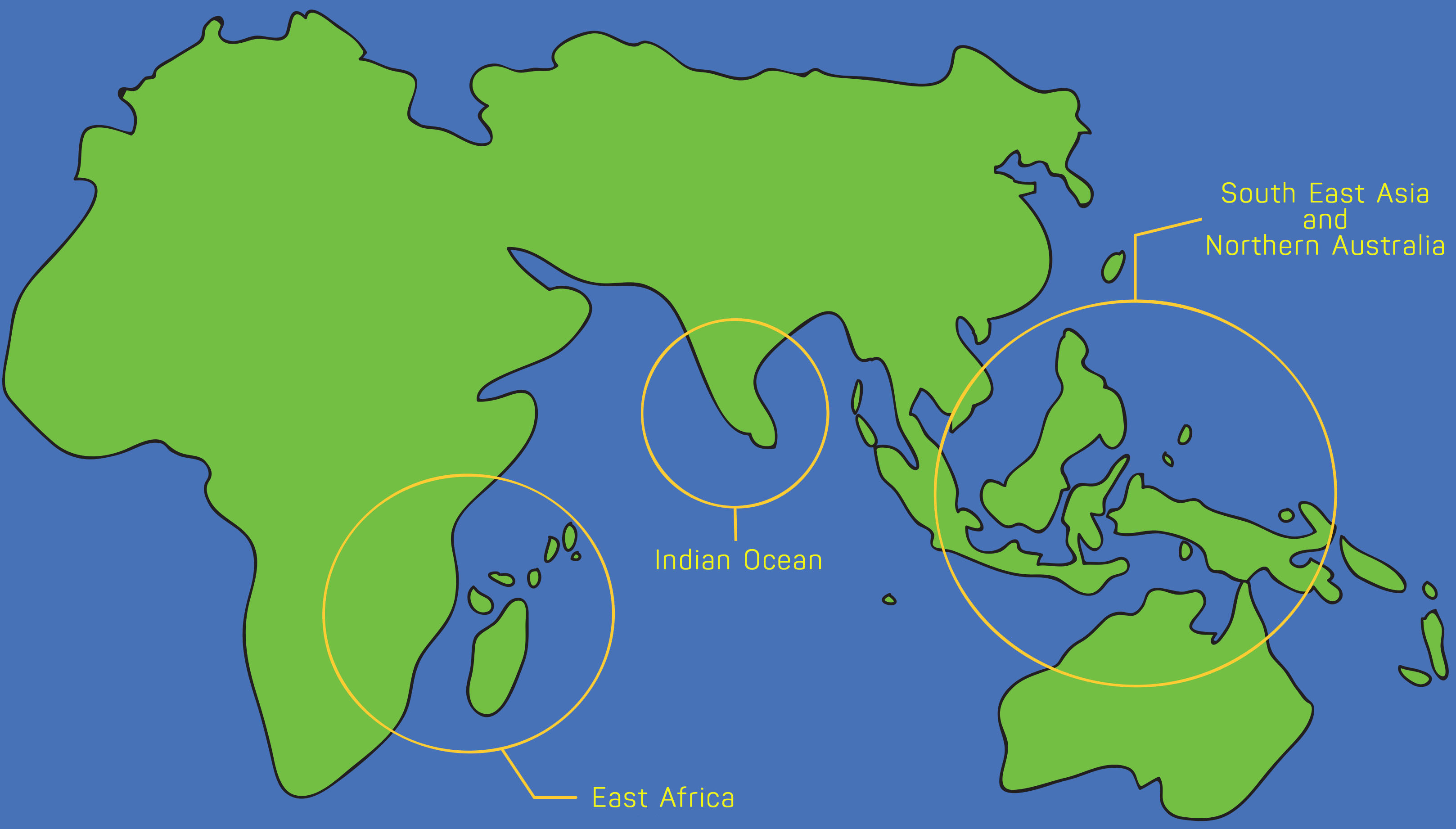
They can be found in the waters of 37 countries and territories from West Pacific to the Indian Ocean.[3]
2. What is happening to dugongs?
Dugong populations are decreasing everywhere, including past population centers, at a staggering rate; they have disappeared from Taiwan and the Maldives. These animals are listed in the IUCN Red List as vulnerable to extinction and in Vietnam’s Red List as critically endangered, and it is against the law to exploit sea cows in any way, shape, or form.
While dugongs used to proliferate in areas such as Halong Bay and the coastline of Khanh Hoa, Con Dao, and Phu Quoc, there are only approximately 10 dugongs currently alive on Con Dao, and about 100 to 300 on Phu Quoc, Vietnam’s largest island.[4]
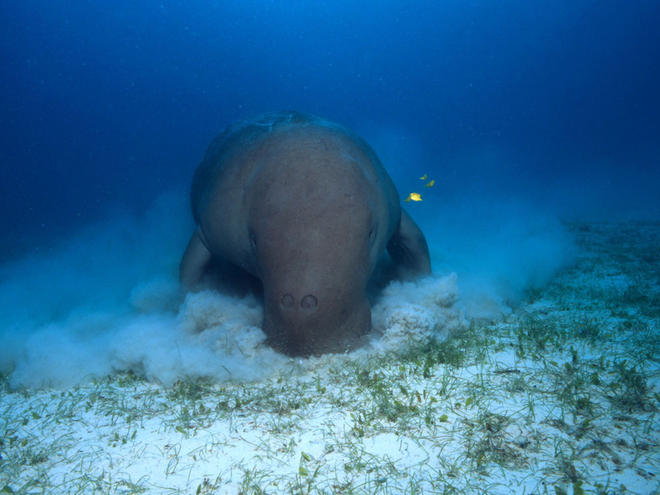
3. What are the reasons?
In Vietnam and neighboring countries, unsustainable and illegal fishing methods near seagrass biomes have had a severe impact on the health of these meadows, thereby threatening dugong populations.
In addition, ocean pollution leads to the depletion of seagrass, which is the main food source of sea cows. This also explain why sea cows are on the edge of extinction. [5]
However, as fishers worldwide continue to target dugongs for their meat and tusks, their population will continue to dramatically decrease. The meat is considered to be valuable, and their tusks, commonly found in adult males, can fetch a price of $650.[6]
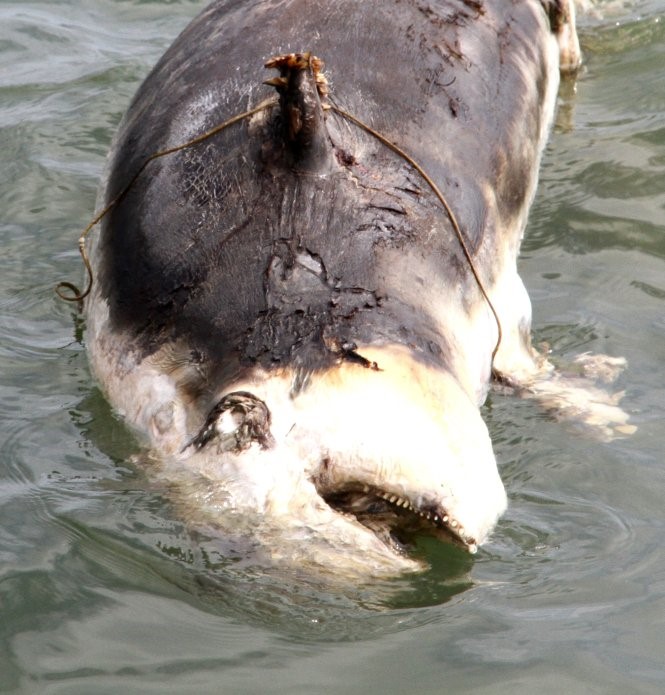
The dead body of the Sea Cow with fishing net around the neck at Phu Quoc Marine Protected Area, Kien Giang 2014. Photo in Tuoi Tre Newspaper.[7]
Fishing nets in seagrass beds and shark nets also pose a significant danger to dugongs.
Furthermore, collisions with boats that run aground can also lead to brain damage, or even death to these animals.
Finally, trash and debris can harm them in unexpected ways. They can get entangled in old nets, fishing lines, and ropes, and they may also be cut by glass shrapnel and other solid debris in seagrass meadows.

4. What can we do?
- Take note while passing through or anchoring at seagrass meadows.
- Lobby for the creation of protected marine biomes and learn more about dugongs through conservation programs
- Raise awareness about these mammals, as well as the risks they face
